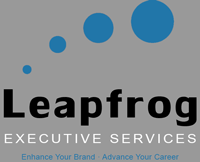Trivial Pursuits
Category : 2021
It only required the frustration of some lost Scrabble tiles, 45 minutes, and a napkin for high school dropout Chris Haney and his friend Scott Abbott to birth what would become the popular board game Trivial Pursuit. The game debuted in 1981, and five years later, 20 million copies were confirming the “importance” of the mass of minutia tumbling around in human brains. The game is now available in 26 countries and 17 languages.
Trivia is defined as “that which is of little value or importance.” The Latin origin of the word is trivium or crossroads, and the meaning of trivium evolved to define information that is commonplace or found everywhere. Closely related is the concept of minutia, “the small, precise, or trivial details of something.” Whether motivated by curiosity, entertainment, or an innate competitiveness, when we are right about a piece of information, a drop of dopamine is released in our brains, and we like it, giving trivia a subtly addictive power in our minds.
While trivia offers a nice diversion or the foundation for an evening of fun around a table, an executive consumed by data, details, and the unimportant easily loses strategic focus and personal impact quickly diminishes. The quest for differentiation among peers can subtly intoxicate a leader into believing something no one else knows makes a defining difference, and the executive wanders into what British historian G.M. Young called, “ . . . the Waste Land of Experts, each knowing so much about so little that he can neither be contradicted nor is worth contradicting, ” (Victorian England: Portrait of an Age).
It is easy for a talented leader to articulate a vision for an enterprise or a company, while slowly losing the vision for his or her own life. The Greeks referred to this as lacking telos—losing sight of an ultimate objective or aim. Before long, a leader’s mental and emotional systems will look for a way to resolve the cognitive dissonance. If resolution isn’t found, the executive’s ability to see and create energy around a corporate vision is minimized while the leader searches through the fog to find the telos for his or her life.
Some clear indicators reveal when a leader is losing telos—
· Getting things done becomes more important than doing the right things.
· What becomes more important than why.
· Expedience becomes more important than truth.
· Maintaining an image becomes more important than living authentically.
· Accomplishments become more important than relationships.
· Achieving a promotion becomes more important than delivering results.
When telos is lost, boredom quickly fills its place. A previously engaged and effective leader lacking a personal vision pursues mental and emotional stimulation in the trivia, the minutia of a job. Leadership is replaced with control as a micromanager is born, and orchestrating activity quickly becomes more important than driving results. Legendary entrepreneur and business icon Mary Kay Ash noted, “In absence of clearly defined goals we become strangely loyal to performing daily acts of trivia.”
Burned out and bored executives don’t lack for ideas. They may drive a flurry of activity and change in the form of—
· Marching toward an acquisition long after due diligence says the quest will create value.
· Pursuing a new product or different market to gratify ego more than to capture an opportunity.
· Leading a corporate reorganization that creates the chaos the leader needs to feel engaged.
· Encouraging teams to compete for resources because the relational tension is entertaining.
Our information-rich culture doesn’t help a leader trying to regain a focus on information that is valuable more than what is available. Immediate and ubiquitous access to a computer screen or a mobile device can give a leader an easy, and often addictive shot of trivia-stimulated dopamine. Click rates and reviews define importance. In his characteristic candor and dry wit, veteran broadcaster David Brinkley admitted, “When there is no news, we will give it to you with the same emphasis as if there were.” It is helpful to remember Brinkley worked most of his career when there were three news networks deciding what was important and when you should hear it.
Former General Electric chairman Jack Welch had very Welchian way of helping strategic leaders avoid becoming trivia-driven executives, suggesting, “An overburdened, overstretched executive is the best executive, because he or she does not have the time to meddle, to deal in trivia, to bother people.” Thanks, Jack.
What can an executive do to regain a lost vision?
· Get away from the noise. Effective leaders that produce enduring results know the value of temporarily, and regularly separating themselves from a ceaseless flow of trivia into their lives. They determine what is important by volition, not volume. They welcome, even nurture a new thought in their minds. They believe silence is more than golden—it is essential to survival.
· Resist the urge. A trivia-addicted mind will convince an executive that he or she cannot survive without a nearly real-time awareness of what is happening, who is saying what, and predictions about what will happen next.
· Read a book from an earlier century. The vocabularies and sentence structures employed by late 19th or early 20th century writers force a reader to slow down, pause, and think deeply. Writers of that era were informers more than entertainers, so their insights have an enduring relevance designed to last beyond a news cycle.
· Refuse to allow your calendar to define your value. A full calendar measures activity, it does not define value. Rube Goldberg’s machines illustrated that a flurry of activity can look productive, while leaving you near the same place where you started. Any executive lacking the inner strength to allocate time to reflection and thinking will quickly become consumed by trivial pursuits.
Though she lacked sight after the first 19 months of her life, Helen Keller believed, “The only thing worse than being blind is having sight and no vision.”
